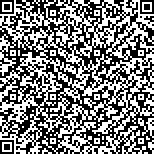| 本文已被:浏览 1929次 下载 1269次 |

码上扫一扫! |
|
|
| 氨氮对海月水母螅状体和碟状体的急性及慢性毒性作用 |
|
葛建龙1,2, 孟乾1, 陈四清1,2, 刘琨1, 刘长琳1,2, 谭杰1,2, 边力1,2
|
|
1.农业部海洋渔业可持续发展重点实验室 中国水产科学研究院黄海水产研究所 青岛 266071;2.海洋渔业科学与食物产出过程功能实验室 青岛海洋科学与技术国家实验室 青岛 266237
|
|
| 摘要: |
| 本研究采用静水实验法,在水温21º;C、盐度30、pH8.10条件下,分析了水体氨氮对海月水母(Aurelia coerulea)螅状体以及碟状体的急性毒性作用,并且探讨了慢性氨氮胁迫对海月水母螅状体无性生殖的影响。急性毒性实验结果显示,氨氮毒性效应与浓度和胁迫时间呈正相关,氨氮对螅状体24、48、72、96h半致死浓度分别为225.60、164.26、62.67和25.44mg/L,氨氮对碟状体24、48、72、96h半致死浓度分别为49.96、31.53、24.54和21.43mg/L,螅状体与碟状体的总氨氮安全浓度分别为2.54和2.14mg/L,非离子氨安全浓度分别为0.13和0.11mg/L。慢性氨氮毒性实验显示,实验组螅状体产生的子代螅状体数少于对照组,而随着胁迫时间延长,螅状体繁殖子体的速率恢复至对照组水平。研究结果表明,氨氮对海月水母具有毒性作用,富营养化水体中氨氮含量升高不是海月水母暴发的直接原因;此外,海月水母螅状体可能具有一定的适应慢性氨氮胁迫的自我调节能力。 |
| 关键词: 海月水母 氨氮 急性毒性 慢性毒性 |
| DOI:10.11693/hyhz20171100286 |
| 分类号:Q14 |
| 基金项目:中国水产科学研究院黄海水产研究所基本科研业务费项目,20603022015011号;国家自然科学基金项目,31702327号。 |
|
| ACUTE AND CHRONIC TOXICITY OF AMMONIA NITROGEN TO THE POLYPS AND EPHYRAE OF MOON JELLYFISH AURELIA COERULEA |
|
GE Jian-Long1,2, MENG Qian1, CHEN Si-Qing1,2, LIU Kun1, LIU Chang-Lin1,2, TAN Jie1,2, BIAN Li1,2
|
|
1.Key Laboratory for Sustainable Utilization of Marine Fisheries Resources, Ministry of Agriculture, Yellow Sea Fisheries Research Institute, Chinese Academy of Fishery Sciences, Qingdao 266071, China;2.Laboratory for Marine Fisheries Science and Food Production Process, Qingdao National Laboratory for Marine Science and Technology, Qingdao 266237, China
|
| Abstract: |
| Using static biological toxicity test, we analyzed the acute toxicity of ammonia nitrogen on the polyps and ephyrae of moon jellyfish Aurelia coerulea in water temperature 21℃, salinity 30, and pH 8.10. Meanwhile, the chronic toxicity of ammonia nitrogen to asexually reproduction of scyphistoma was determined. The acute toxicity results show that the toxicity of ammonia had a significant positive correlation with the stress time and concentration. The 24, 48, 72, and 96h median lethal concentration (LC50) of total ammonia nitrogen was 225.60, 164.26, 62.67, and 25.44mg/L in the Aurelia polyps; and 49.96, 31.53, 24.54, and 21.43mg/L in the Aurelia ephyrae, respectively. The safe concentration of total ammonia nitrogen for polyps and ephyrae was 2.54 and 2.14mg/L, and that of the unionized ammonia was 0.13 and 0.11mg/L, respectively. The chronic toxicity results show that the daughter polyp number produced under ammonia exposure was significantly less than that of the control group. While the daughter polyp reproduction rate could recover to the same level of the control group as exposure time prolonged. Results showed that ammonia nitrogen had toxic effects on moon jellyfish A. coerulea, and the increased ammonia nitrogen level in the eutrophic water was not the direct cause for the outbreak of A. coerulea. In addition, A.coerulea scyphistoma may be able to tolerate a chronic ammonia nitrogen stress. |
| Key words: Aurelia coerulea ammonia nitrogen acute toxicity chronic toxicity |
